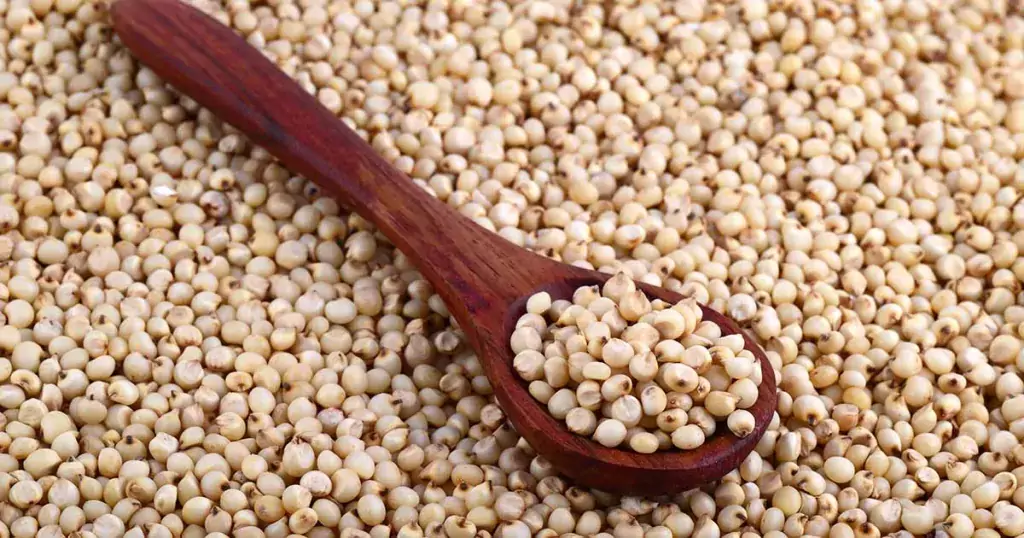sorghum is a genus of about 25 species of flowering plants in the grass family.it is an important cereal crop in Kenya.
What is Sorghum used for?
Sorghum grains are ground for flour which is used for making porridge, ugali, or for brewing. Young growing crops may be used for fodder by feeding it to animals directly after wilting for some time or making silage.
Agroecological zones of sorghum in Kenya
- Western
- Northern Rift Valley
- Eastern
- Some parts of the central region
Ecological Requirements of Sorghum
Sorghum has a well-developed rooting system and the ability to roll up its leaves during hot weather. These qualities make the crop drought resistant. Rainfall of 420 mm to 630 mm per annum is adequate for food growth and production, hence the crop grows well In areas below 1500 m above sea level. At higher altitudes, poor yields are obtained and the crop is attacked by pests such as shoot flies and downy mildew disease. The crop requires fairly fertile and well-drained soils.
Varieties
Sorghum Varieties are characterized by seed by seed color and taste. In this connection, there are varieties that are white in color and palatable and those that are brown or red and bitter. There are two notably improved varieties grown in Kenya, these are:
- Dobbs
- This variety was selected in western Kenya and is suitable for all the areas around the shores of lake victoria. Its seeds are brown and mature in about four months.
- Serena
- This variety was selected after crossing Dobbs with a variety from Swaziland. It has brown seeds and matures in about months.
Selection and Preparation of Planting Materials.
The seeds are prepared by threshing the dry heads, winnowing, and seed-dressing.
Field operation
- Planting
- planting is normally done by broadcasting the seeds on the firmly prepared seedbed. Sorghum is usually sown together with other crops, especially maize, and beans. It can also be planted in pure stands at a spacing of 60 cm by 15 cm.
- Fertiliser application
- fertilizers are not commonly used in growing sorghum. However, it responds well to farmyard manure on moist soils.
Disease Control
Sorghum is attacked by both leaf and inflorescence diseases. Some of the most important leaf diseases include:
- Leaf blight
- Anthracnose
- Sooty stripe
- Loose smut
- Head smut
- Leaf diseases are effectively controlled by growing improved varieties which show varietal resistance. Smuts is controlled by seed dressing.
Harvesting

Sorghum is ready for harvesting, three to four months after planting. The heads are cut off using a Sharp knife after which they are sun-dried. The dried sorghum is then threshed, winnowed, and stored.
- Lee Jae Myung age, wife, children, assassination, politics, worth.
- Dr. Frank McGeorge bio-wife, wdiv, ethnicity, family, net worth.
- Rebbeca Miano Bio, Age, Career, Family, Tribe, Net worth.
- Dale Russell age, education, children, wife, net worth, Fox 5.
- Tavares Jones bio-wiki, age, children, wife, net worth, career.
- Who Is Chris Hemsworth? origin, and love life.
- Mario Solis Bio, Wiki, Age, Children, Wife, Net Worth, Career
Yields
The yields range from 500 to 1500 kg per hectare but with good husbandry Yields of 3000 kg per hectare could be achieved. Sorghum can be ratooned for one or two seasons.
Marketing
The crop is marketed through the National cereals and produces Board. Private buyers also purchase sorghum directly from farmers.
- Bay head elementary school history, enrolment, programs offered.
- The best private primary schools in Nyeri county.
- Kenya Institute of special education, courses.
- List of Accredited Private Universities in Kenya
- Kenya Medical Training College, courses, requirements.
- Best Public High Schools in Kiambu County.
- How is The Lenana Boy school and location?